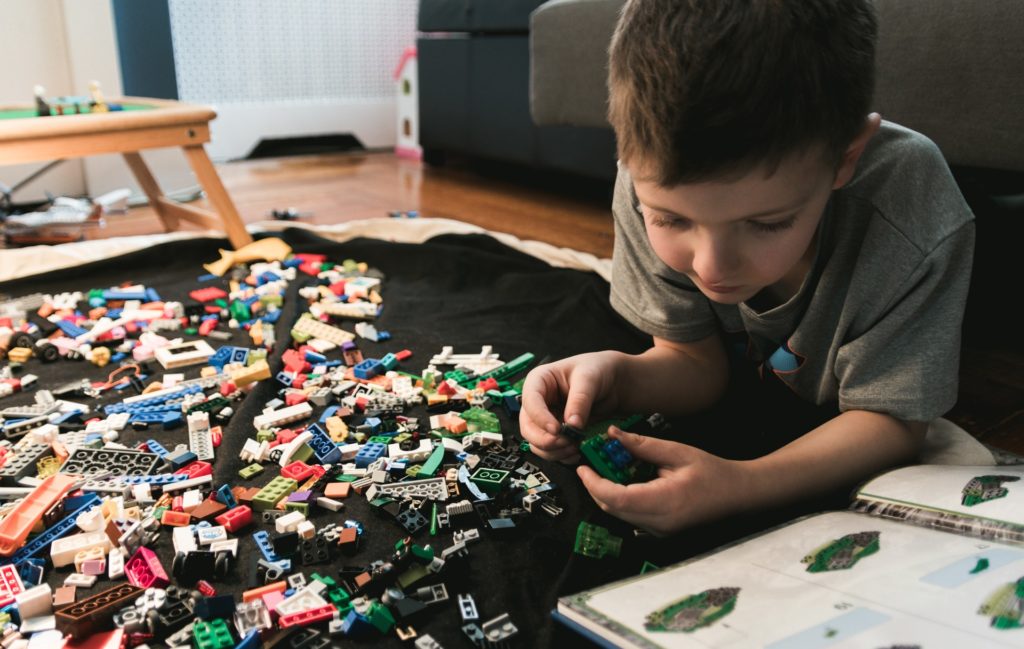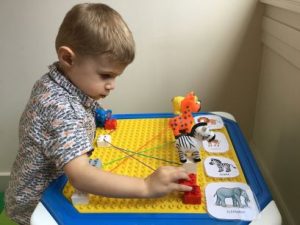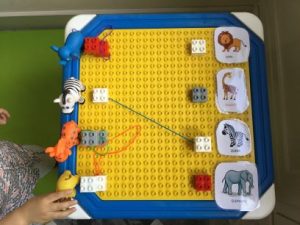ADHD & Attention Deficits, Autism, Dyspraxia / DCD, Fine Motor Skills, Fun Activities & Games, Help for School and Kindy, Sensory Processing
Toys to Improve Fine Motor Skills with LEGO® Based Therapy
Did you know that LEGO® construction blocks can be more than just a fun game for kids? For children who have social difficulties, learning disabilities, or physical developmental impediments, LEGO® Therapy is a wonderful option.
Playing with LEGO® bricks has been scientifically shown to improve a wide array of skillsets for these children, and one of the best toys to improve fine motor skills! In fact, LEGO Therapy is becoming quite well known.
Regular play sessions with LEGO® bricks can significantly improve challenges faced by children who deal with any of the following conditions:
- Sensory processing disorder (SPD)
- Dyspraxia
- Attention Deficit Hyperactivity Disorder (ADHD)
- Attention Deficit Disorder (ADD)
- Autism Spectrum Disorder (ASD)
- Asperger’s Syndrome
And they’re FUN!
For almost 70 years, LEGO® construction blocks have been a staple in the toy industry. And anyone with children probably has more than one bucketful in their playroom. I’m amazed at the longevity of this toy!
The beauty of LEGO® is that the fun can be reignited month after month, year after year using interchangeable kits that reflect pop culture trends. In today’s ever-changing world, it’s incredible that there is one toy that equally appeals to boys and girls and from toddlers* to teens.
In fact, I have two adult brothers – one is an engineer and the other a physicist – who still spend time on their weekends relaxing over a new LEGO® kit.
*For parents and teachers of toddlers, there is another option for LEGO® therapy. LEGO® based therapy can be interpreted equally successfully with the larger version of blocks from their sibling company known as DUPLO®. LEGO® Therapy is for everyone!
For me, there is something even more exciting. The creators of LEGO® have found a way to incorporate their toys into new discoveries through early childhood development research.
You see, Dr. Dan LeGoff, a neuropsychologist working with autistic children, discovered that the children playing together with LEGO® blocks were initiating more conversations, having longer conversations, and becoming more relaxed amongst other children.
Thus, a formal structured plan for play therapy came about: LEGO® Based Therapy!

What exactly IS LEGO® Based Therapy?
LEGO® Based Therapy is used to help children and teens who have various social and developmental difficulties. Pediatric occupational therapists who work with:
- children with autism spectrum disorder (ASD),
- ADD,
- ADHD,
- sensory motor processing disorder,
- or dyspraxia
find a wide range of benefits simply from playing with the block sets.
You can follow the formal LEGO® Based Therapy guidelines defined by Dr. LeGoff. Alternatively, simply encourage LEGO® play sessions with your children at home. Either way, the fun can be catered to the individual needs of each participant.
Why it works:
- The nature of playing with LEGO® bricks is based on following a clear set of instructions to build sets. Also, the structured play is systematic and predictable. These are all qualities that help children with social difficulties.
- It’s a multisensory activity. It incorporates tactile manipulation, fine motor skills development, colorful visuals and graphic instructions, and listening.
- When working as a team, the collaborative efforts required to complete projects push children who typically shut down in group activities. The fun nature of the project, along with gentle guidance from participating therapists, keeps the game moving toward a common goal.
Social Skills that are strengthened through LEGO® therapy:
- Communicating with others
- Expressing feelings
- Changing behavior to adjust to a situation
- Problem-solving skills
- Relating to the world around them
Physical skills that are strengthened through LEGO® therapy:
- Grip
- Fine motor skills development and manipulation
- Sitting posture
- Proprioceptive input from the fingers (the ability to sense your hands and their movement without looking at them)
Ideas For Individual or One-on-One Play


1. Animal Tracks Matching
Using a building board, set up pictures of animals on one side and toy animals on the other side.
Use blocks linked with string for toddlers to draw a line from the corresponding animal toy and pictures.
2. Grow a Block Garden
Great for little builders, create a beautiful springtime flower garden to display year-round.
3. Tic Tac Toe
Great for elementary schoolers, you can build a simple tic tac toe board to play together.
4. Number Build
Using basic blocks, you can work with your child to build numbers.
Tips for Group Play
When setting up a group play session, typically each child is assigned a different role. This is according to the following as defined by Dr. LeGoff. Throughout the session, each child rotates through different roles to stimulate different characteristics with each child. These are the roles:
- Engineer: oversees the design and ensures the instructions are followed.
- Builder: puts the bricks together.
- Supplier: keeps track of which size, shape and color bricks are needed and passes them to the builder.
- Director: ensures the team is working together and communicating well.
Additionally, it’s best to choose a theme for a group play session. Have building kits with instructions will help younger players focus on following instructions. At the same time, have an overall theme (like robots or animals) and allowing children to work as a team to create and execute a design of their own will offer more creativity.
Depending on which kits you have, you can download instructions for any LEGO® or DUPLO® kit. Or, get ideas for themes here. Instructions for LEGO® Therapy building
Rules that Everyone Can Follow
To help set guidelines for any play session – individual or group – it’s a good idea for parents and teachers to lay out specific rules that every child should follow. Here are the commonly-cited rules for group sessions:
- Structures must be built together by the group.
- If you break something, you should fix it or ask for help in fixing it.
- If another group member is using something and you want it, ask for it. Don’t just take it.
- Use quiet indoor voices without shouting.
- Use kind and polite words.
- Keep your hands and your feet to yourself.
- Do not put LEGO® bricks in your mouth.
- At the end, tidy everything away and put it back where it came from.
And here is a great example to keep your LEGO® tidy: For an idea to keep your LEGO® Therapy blocks tidy
Happy building! Be sure to share with us your favorite themes and some photos from your LEGO® Based Therapy sessions!